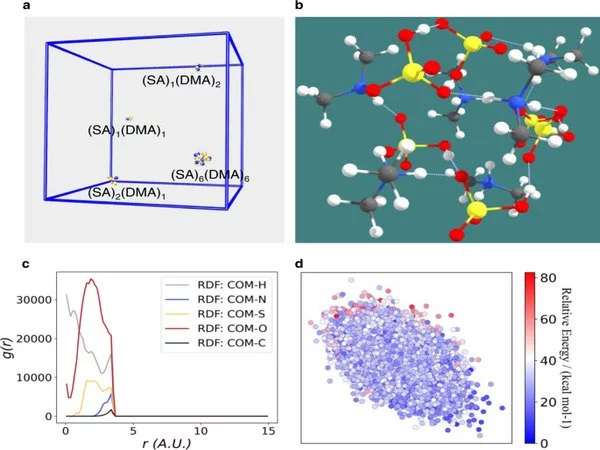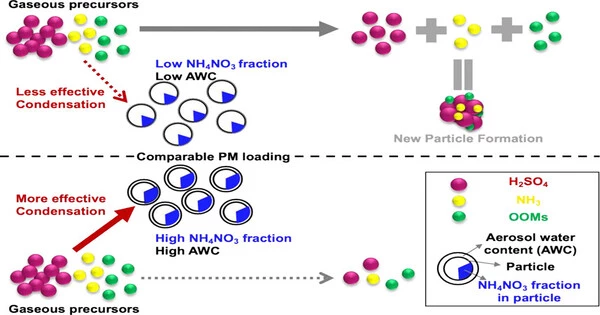New particles are typically formed through nucleation, a process in which individual molecules interact with one another until a critical cluster size is reached and particle nucleation becomes advantageous. Photoassisted particle formation can be important in many cases, but heterogeneous processes can also be important drivers, as detailed quantum chemical cluster calculations show.
Recently, a research team led by Jiang Shuai from the Chinese Academy of Sciences’ University of Science and Technology of China (USTC) developed a general workflow to simulate atmospheric aerosol nucleation using the full ab initio method. This study was published in Nature Communications.
Aerosol nucleation in the atmosphere contributes nearly half of all cloud condensation nuclei in the world, having a significant impact on global climate change, air quality, and human health. However, little is known about the mechanism of atmospheric aerosol nucleation due to the nonreactivity of force fields (FF) and the prohibitively expensive computational costs of direct molecular dynamics (MD).
This study provides a more efficient and cost-effective method for performing full ab initio simulations of atmospheric aerosol nucleation, as well as a better understanding of the mechanisms of aerosol nucleation.
Jiang Shuai
The researchers presented a general workflow for simulating the formation of atmospheric aerosols. They used active learning techniques to prepare the metadynamics sampling and obtain the comprehensive data sets in the workflow. They performed nucleation MD simulations using a deep network-based force field (DNN-FF), and obtained collision rate constants based on the Poisson distribution.
Molecular precursors for new particle formation and secondary organic aerosol particles can involve the formation of highly oxygenated organic molecules from the oxidation of biogenic terpenes such as α-pinene, and the development of chemical mechanisms to describe this process is critical for climate predictions. The energetics of peroxide formation from α-pinene were evaluated via conformational sampling using density functional theory.

The researchers also applied the DNN-FF-based MD-derived collision rate constant to a cluster kinetics model, which was coupled with static quantum chemistry (QC)-derived evaporation rates.
This study provides a more efficient and cost-effective method for performing full ab initio simulations of atmospheric aerosol nucleation, as well as a better understanding of the mechanisms of aerosol nucleation.
When gas phase species approach an aerosol particle, the first entity they encounter is the particle surface. The depth profile of the adsorbates in the region separating the gas from the particle phase is affected by whether the particle is more solid or liquid-like.
An atmospheric aerosol’s phase state influences mass transfer and chemical kinetics within the particle, as well as its effects on climate. Under environmental conditions, common mixtures of inorganic and organic materials can result in a highly viscous glassy state. Advanced vibrational spectromicroscopy has provided much-needed bond-specific information on how various aerosol particle constituents are distributed in space during phase transitions.





